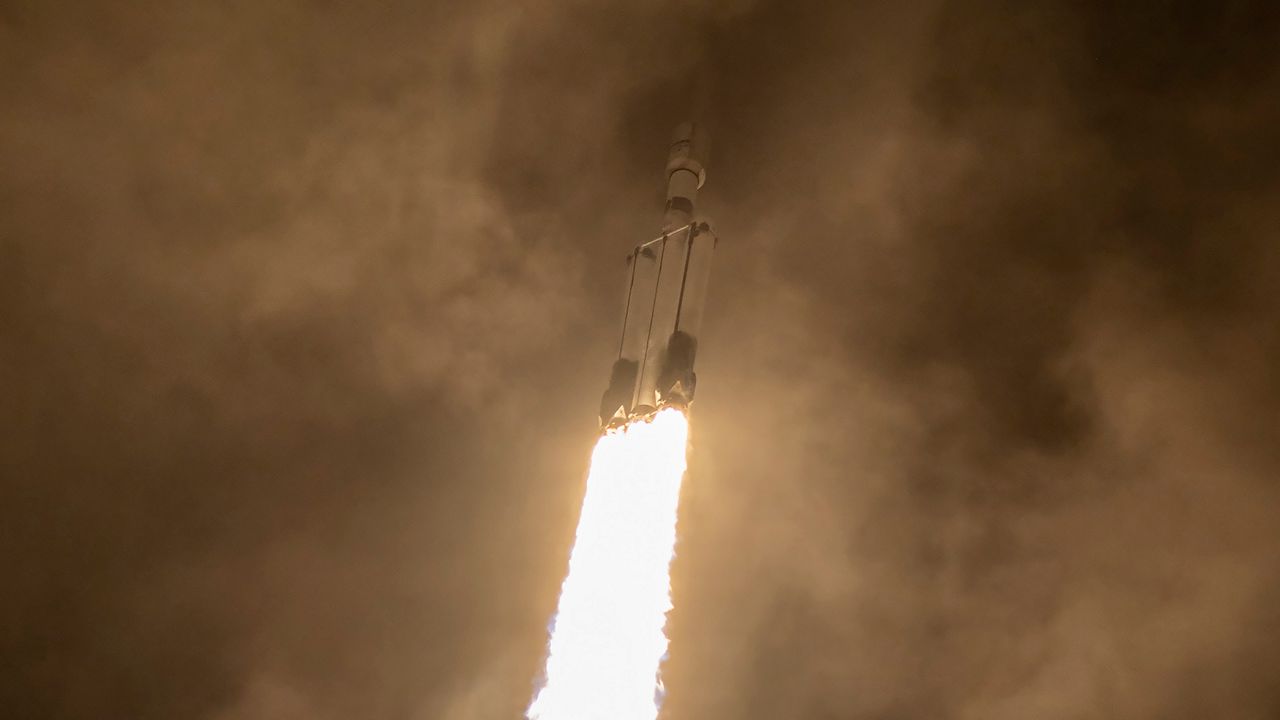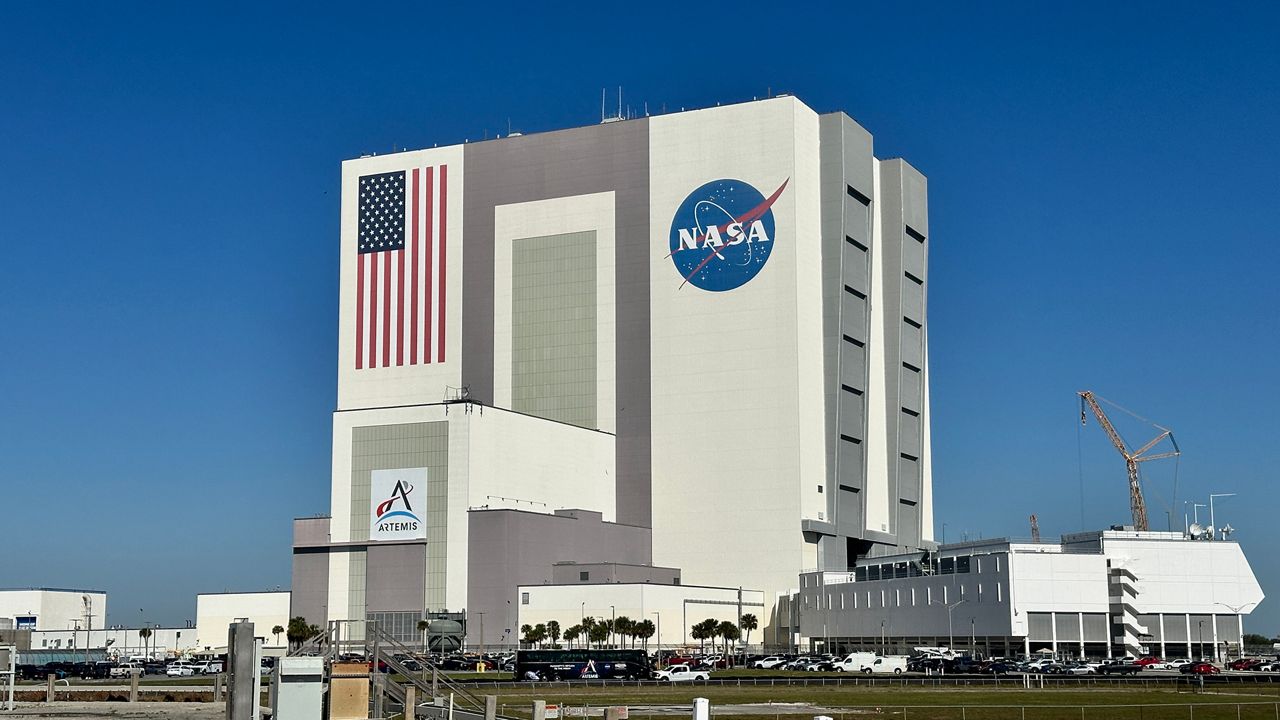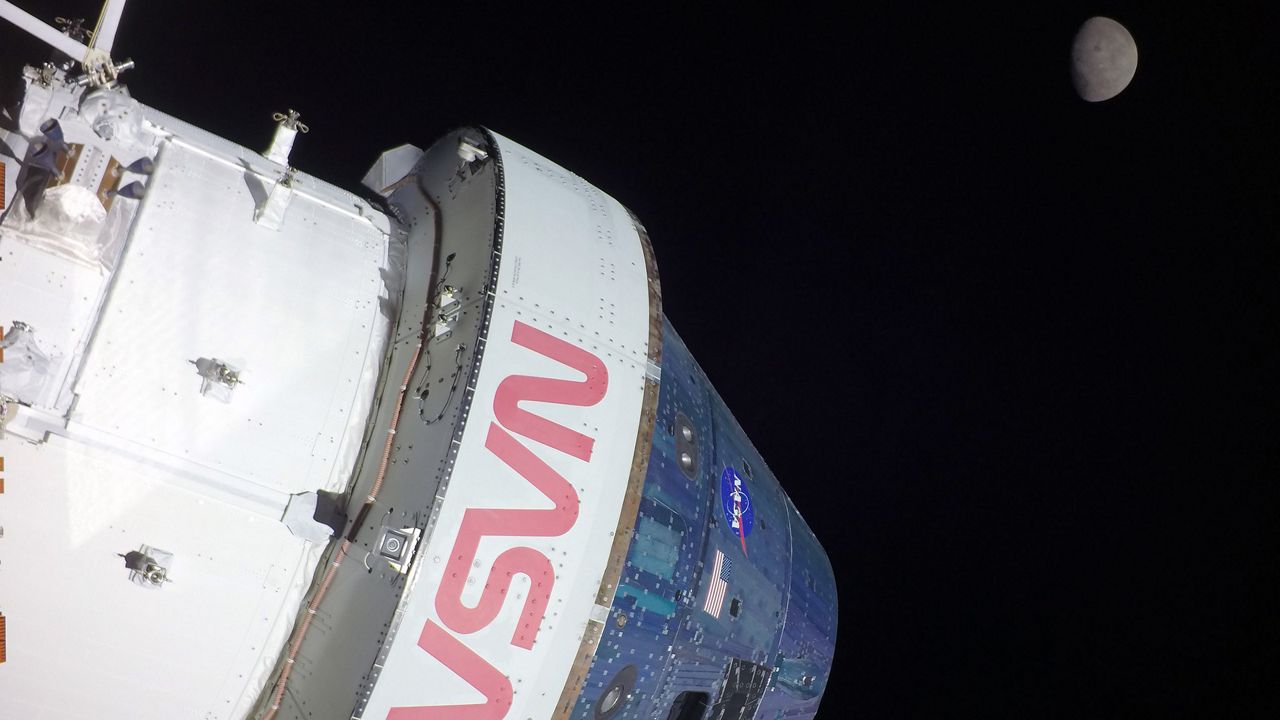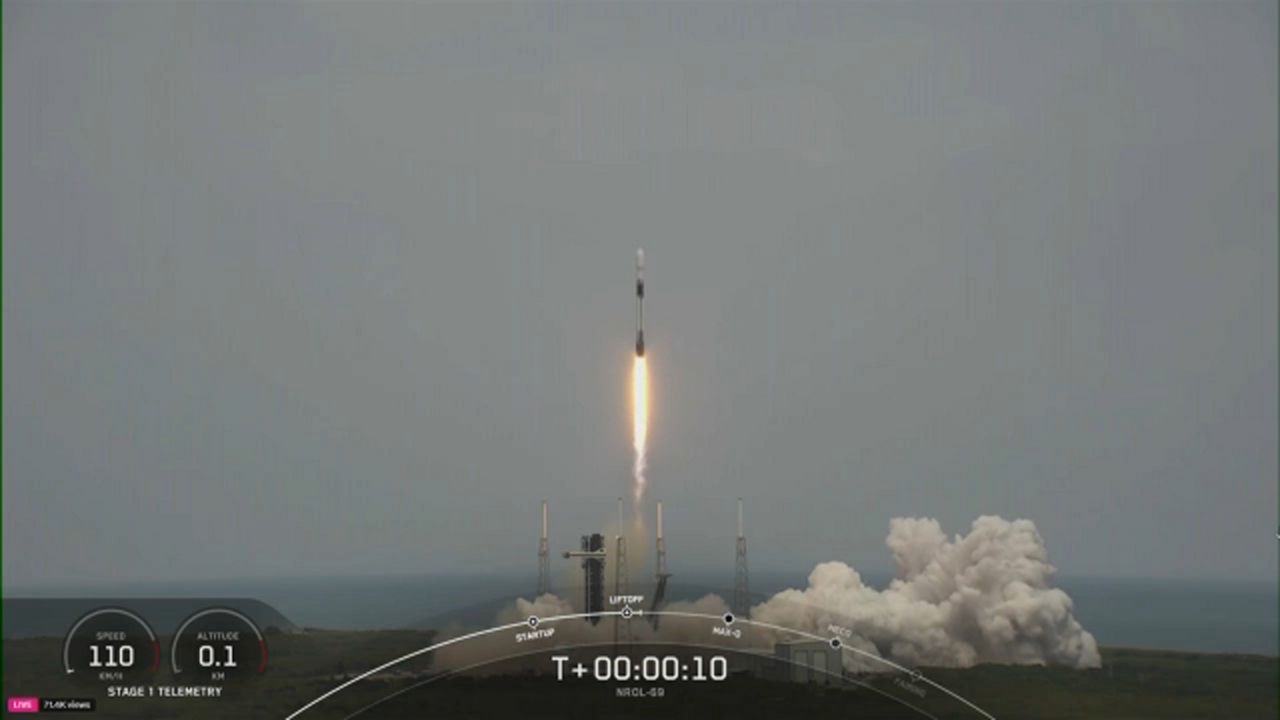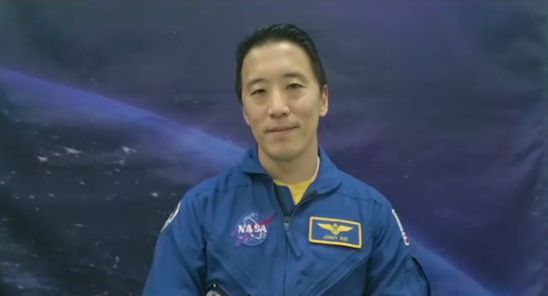KENNEDY SPACE CENTER — While it was less than 24 hours apart, SpaceX still had a double launch day, first with the Starlink 6-7 mission very early Friday morning and then the JUPITER 3 late Friday evening. And it took a few tries to do it.
What You Need To Know
- Starlink 6-7 was the first and the JUPITER 3 was the second
- Two first-stage boosters created sonic booms as they came in for landings
- RELATED: SpaceX gets ready for launch batch of Starlink satellites
-
- Get more space coverage here ▶
- 🔻Scroll down to watch the launch🔻
Liftoff! pic.twitter.com/7fep4mFSOi
— SpaceX (@SpaceX) July 29, 2023
SpaceX’s powerful Falcon Heavy rocket left Launch Complex 39A at the Kennedy Space Center at 11:04 p.m. ET to send the JUPITER 3 communications satellite to a geosynchronous transfer orbit, stated SpaceX.
The Falcon Heavy has three first-stage boosters. The ones on either side landed at Landing Zones 1 and 2 while the center booster will end up in the Atlantic Ocean, stated the Kennedy Space Center.
And sonic booms were heard from as far as Orlando when the two side boosters landed.
Falcon Heavy’s side boosters have landed on LZ-1 and LZ-2 at Cape Canaveral Space Force Station pic.twitter.com/OItmoqvgrr
— SpaceX (@SpaceX) July 29, 2023
One of the boosters supported the USSF-44 mission and the other launched the USSF-67 mission.
The third time was a charm for a double launch
Friday saw a rare double launch for the Space Coast by @SpaceX: The first was @Starlink 6-7 by the Falcon 9 rocket, left, and the second was #JUPITER3 by the Falcon Heavy rocket.
— 🚀Anthony Leone🌕 (@AnthonyLeone) July 29, 2023
Find out more about these launches in my article at @MyNews13: https://t.co/PXMflcPGgV pic.twitter.com/u1juDoJ67K
The JUPITER 3 mission was originally set to launch on Wednesday night, but SpaceX had to scrub its powerful Falcon Heavy rocket just over a minute from liftoff. In a tweet, the company stated there was a violation of abort criteria and that the next attempt would be on Thursday night.
Standing down from tonight’s Falcon Heavy launch of the @HughesConnects JUPITER 3 mission due to a violation of abort criteria. Teams are resetting for a launch attempt tomorrow, July 27; vehicle and payload are in good health
— SpaceX (@SpaceX) July 27, 2023
But come late Thursday afternoon, the company announced the second launch attempt will be pushed to Friday at 11:04 p.m. ET to give SpaceX officials time to complete checkouts for the Falcon Heavy rocket.
To complete vehicle checkouts, now targeting Friday, July 28 for Falcon Heavy's launch of the @HughesConnects JUPITER 3 mission. Weather improves to 65% favorable for liftoff tomorrow night → https://t.co/bJFjLCiTbK
— SpaceX (@SpaceX) July 27, 2023
Even if there were no issues for Thursday night's attempt, the weather was considered another hurdle for SpaceX to clear for the JUPITER 3 mission. The 45th Weather Squadron on Thursday morning gave a 40% chance of good liftoff weather, the same odds for the Starlink 6-7 mission, citing cumulus cloud, thick cloud layers, and anvil cloud rules as concerns.
However, the squadron gave a 65% of good launch conditions for Friday night’s mission.
Originally, Wednesday night was supposed to see two launches: The JUPITER 3 mission and the Starlink Group 6-7. The Starlink mission was supposed to launch at 10:04 p.m. ET, but was moved to Thursday at 10:20 p.m. ET, stated the 45th Weather Squadron.
The JUPITER 3 was moved to Thursday evening, as stated above.
But hopes for a double launch Thursday were dashed when the Starlink mission was launched at 12:01 a.m. ET and the JUPITER 3 mission was moved to Friday evening.
But even though there were 23 hours and 3 minutes between the two launches, the Space Coast did see a double launch.
JUPITER 1, launched in 2012 JUPITER 2, launched in 2016 |
About the mission
Hughes Network Systems, an EchoStar company, sent up its JUPITER 3 broadband communications satellite, which will provide satellite internet to rural areas, stated the company.
“As the leading provider of satellite internet to rural customers across the Americas, we are proud to begin a new era of connectivity with the launch of JUPITER 3,” stated Hamid Akhavan, EchoStar’s CEO in a press release.
In addition to providing internet service, the JUPITER 3 will also provide in-flight Wi-Fi, service to companies, small-business and government and aeronautical and maritime mobility, stated the company.
The JUPITER 3 will join JUPITER 1, launched in 2012, and JUPITER 2, launched in 2016.




